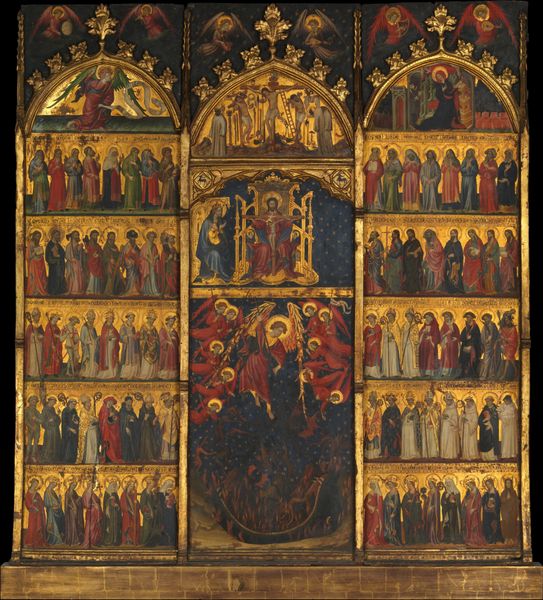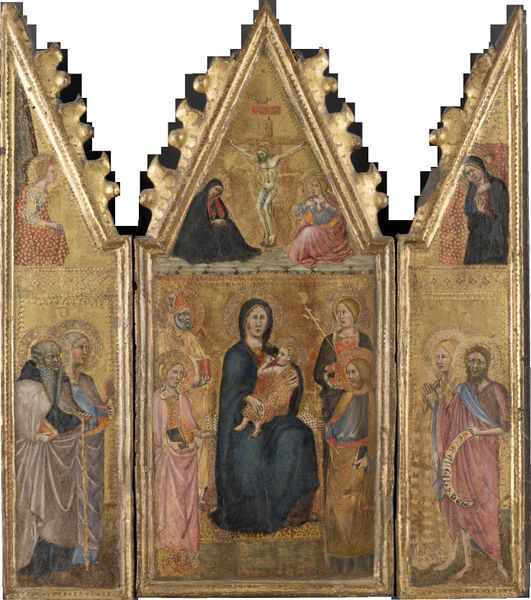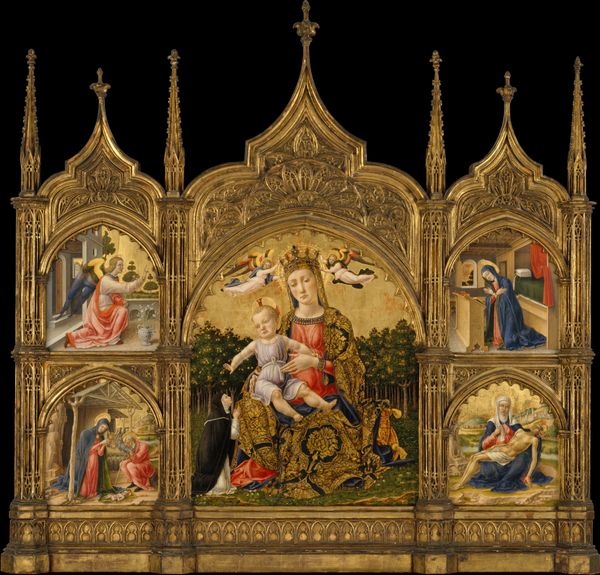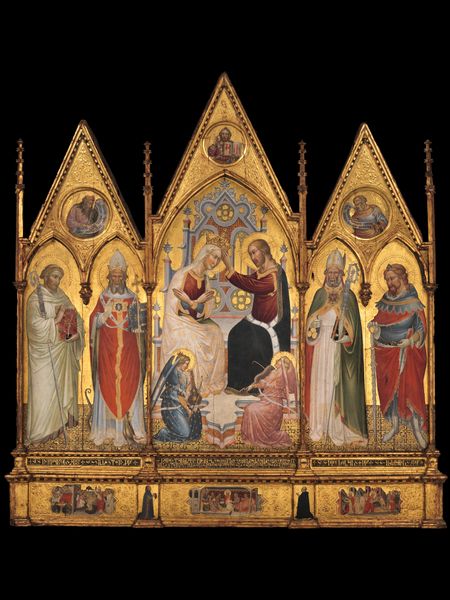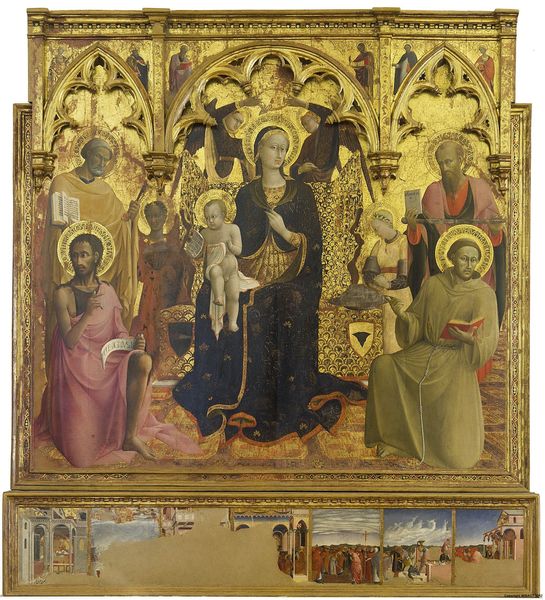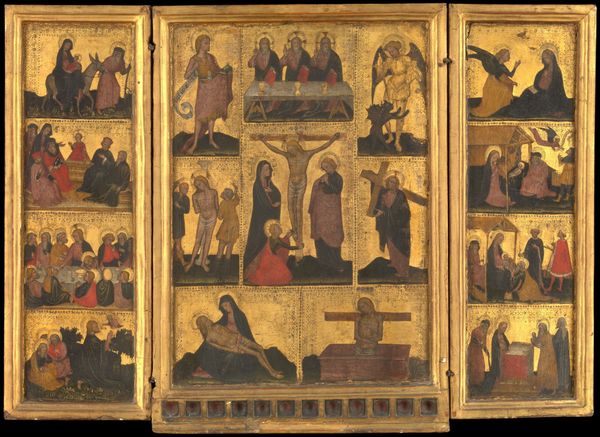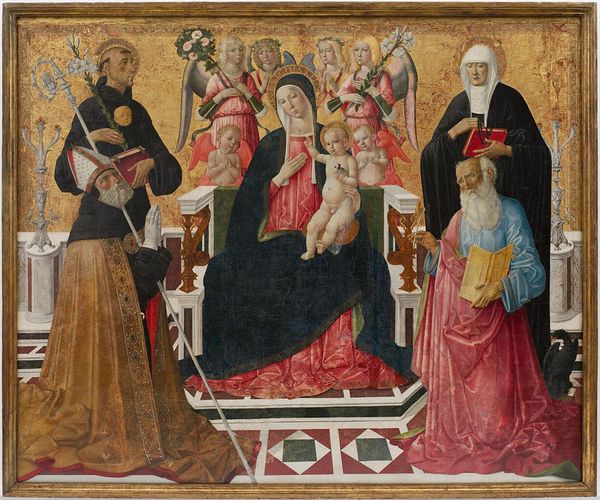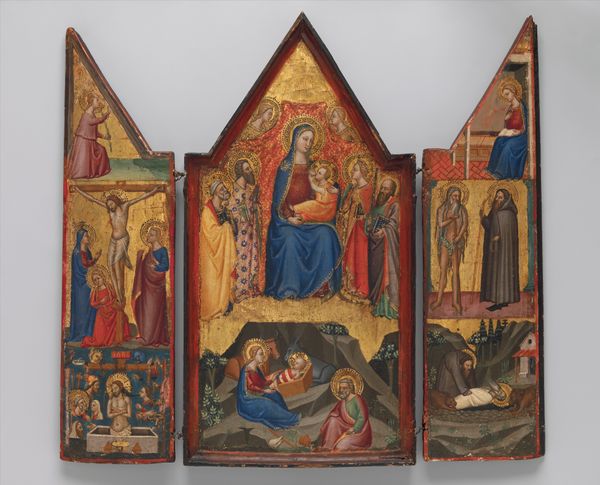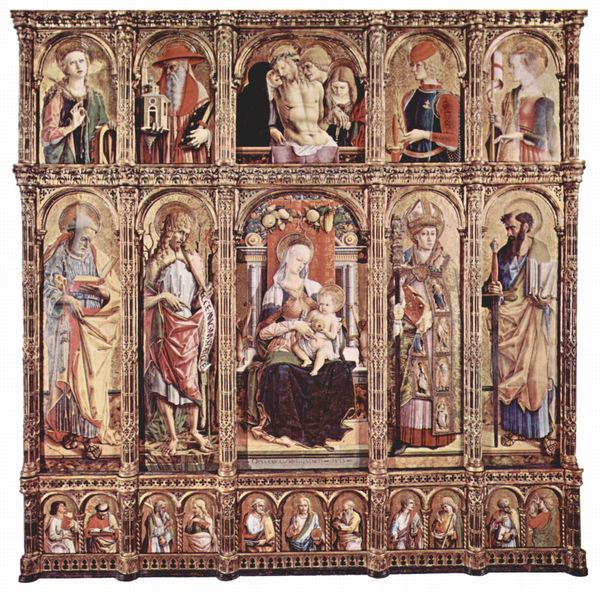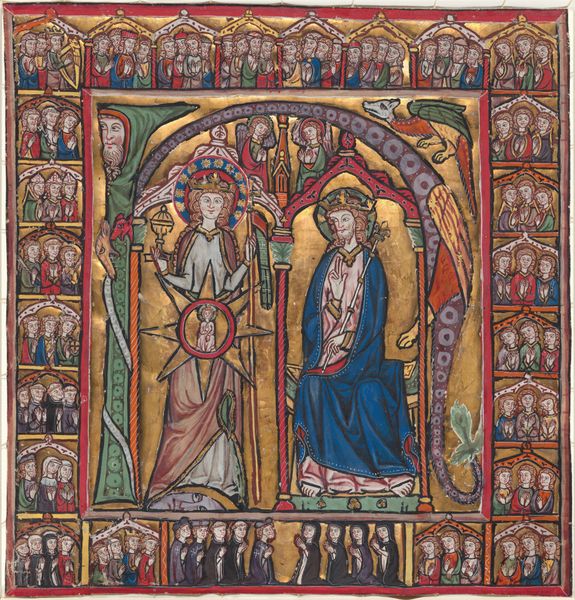
Virgin and Child Enthroned with Scenes from the Life of the Virgin 1470 - 1499
0:00
0:00
panel, tempera, painting
#
portrait
#
medieval
#
panel
#
narrative-art
#
tempera
#
painting
#
figuration
#
international-gothic
#
miniature
#
angel
Dimensions: Central panel, below, 52 x 34 5/8 in. (132.1 x 87.9 cm); central panel, above, 43 3/4 x 34 1/2 in. (111.1 x 87.6 cm); each side panel 84 1/2 x 22 3/4 in. (214.6 x 57.8 cm)
Copyright: Public Domain
Editor: This is the "Virgin and Child Enthroned with Scenes from the Life of the Virgin," made with tempera on panel between 1470 and 1499, by Master Morata. It’s stunning, all those different scenes and the central figure...What do you make of this elaborate construction? Curator: It's a fascinating example of how the material production of art intersected with social and religious structures of the time. Think about the tempera itself: pigment ground, mixed, and applied with meticulous detail. It speaks to specialized labour and workshop practices prevalent during the late medieval period. And it's not just the paint, is it? Editor: True, it’s painted on a panel. The layers are numerous! How does the choice of material affect the piece as a whole? Curator: Exactly. Panel paintings like this served specific functions, didactic and devotional. The preciousness of materials like gold leaf highlights the economic investment in religious art. Now, how do you think the frame, that architectural structure impacts the reading of this work? Editor: I see how each section seems like its own small chapel. It compartmentalizes each biblical passage and sanctifies the image, giving additional material weight. Curator: Precisely. Consider the consumption aspect. Who commissioned it, and what was its intended audience? Altarpieces like this visually narrated religious stories, serving as a conduit for piety but also reinforcing social hierarchies. What is remarkable, is how the labour intensivity has endured in the centuries since the piece was created. Editor: Looking closely at it, I see that while its intention was faith and reverence, it also highlights the social circumstances and skill that allowed for its creation. Curator: Absolutely. By analyzing the materials and modes of production, we uncover rich layers of social history embedded within the art object itself.
Comments
No comments
Be the first to comment and join the conversation on the ultimate creative platform.


